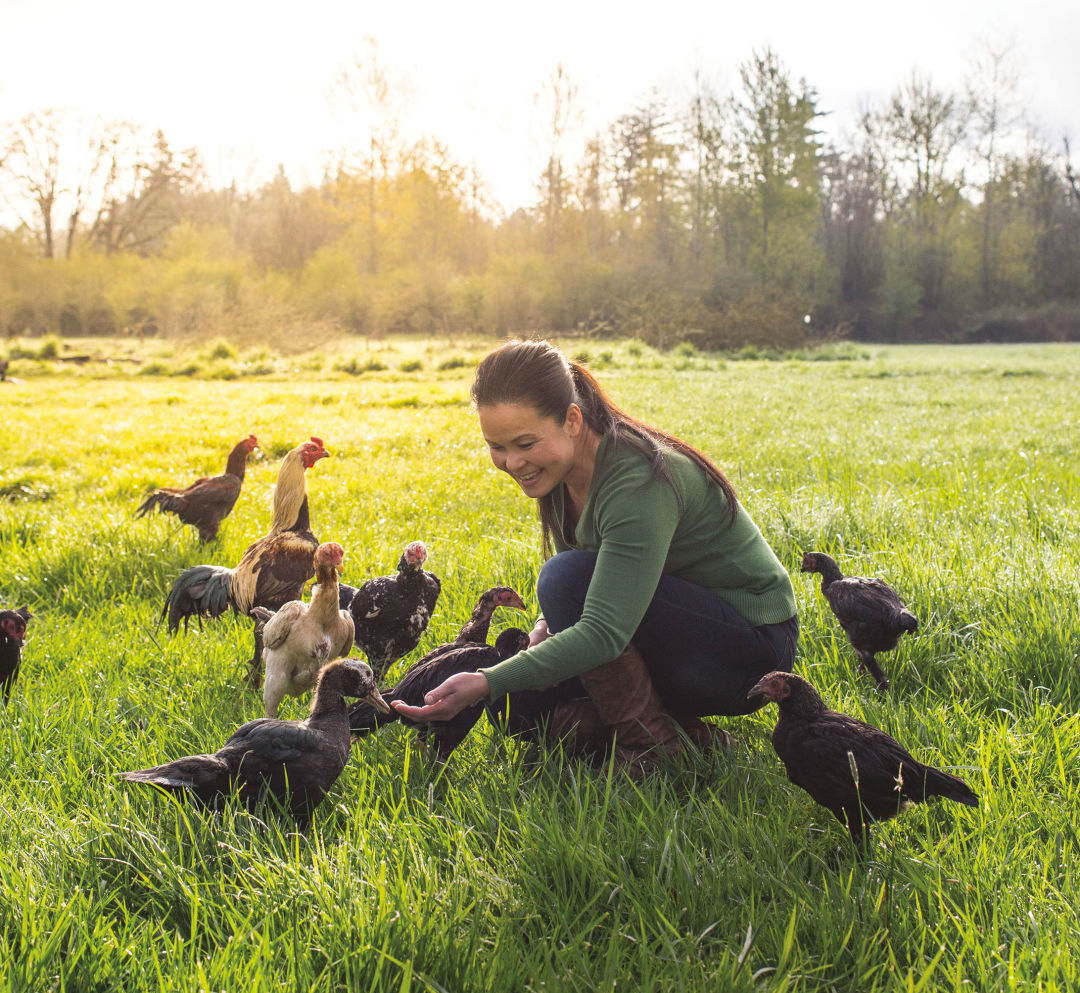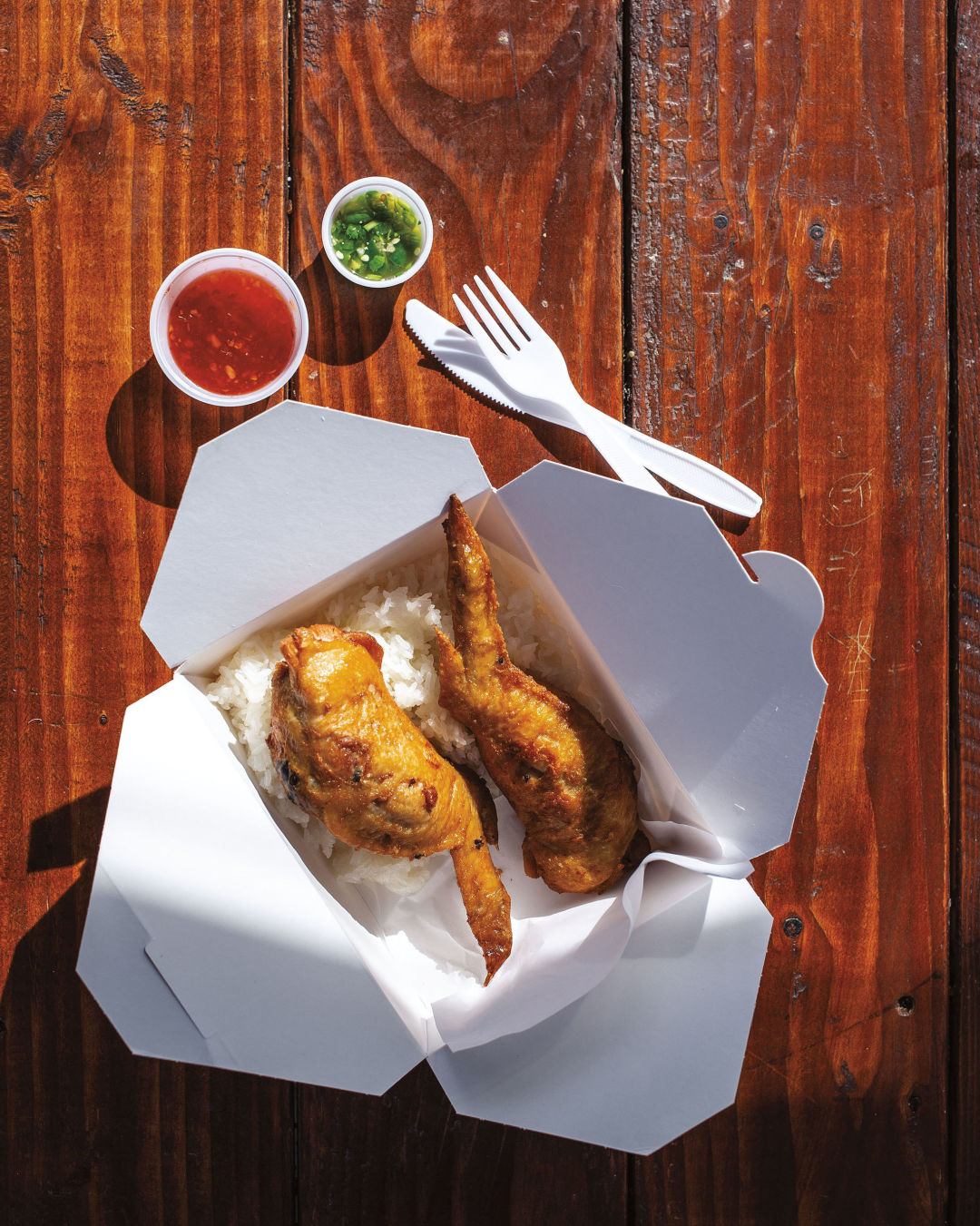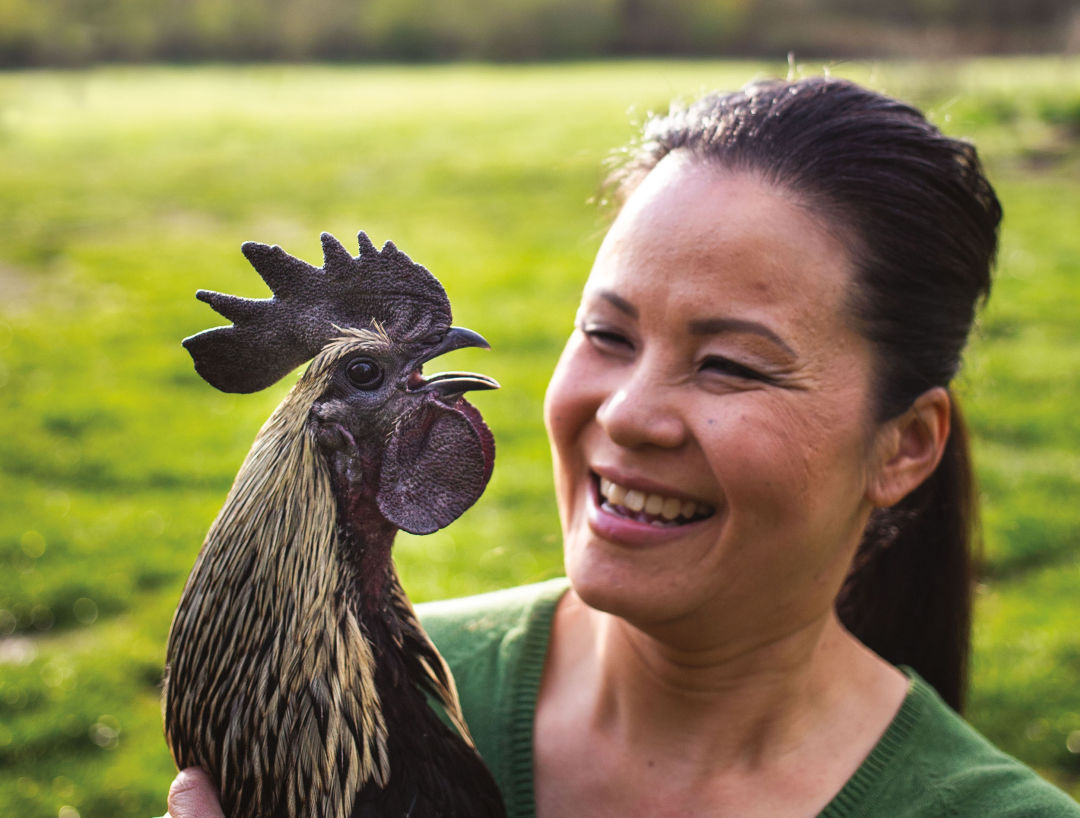
La’s Celebrates Hmong Food Culture One Sausage at a Time
Hello is a word that doesn’t have a direct translation in Hmong, the language spoken by certain groups of Chinese refugees who resettled in Northern Laos, Thailand, Myanmar, and Vietnam starting in the late 1700s. Instead, a more common greeting among Hmong speakers is “noj qab nyob zoo,” which essentially means “eat well, live well.”
When nonprofit development director La Vang-Herr relocated from Wisconsin four years ago, she found it difficult to carry out that phrase. She scoured Asian markets to find specialty mustard greens and lemongrass-heavy pork sausages—foods she grew up eating in her tight-knit community in Milwaukee, a city whose Hmong residents total about 12,000—without much success. The Portland metro area’s Hmong population is smaller, around 2,500, and despite an increasingly diverse restaurant roster there wasn’t a single Hmong food spot around.
That changed in September 2017 when Vang-Herr ditched her career in social justice and equity projects to open what is probably the first Hmong food truck in the Pacific Northwest, in a parking lot behind a Little Caesars Pizza in Aloha.
Named La’s, it’s a place to score excellent Hmong sausages, racing with ginger, chile oil, lemongrass, and kaffir lime, plus other homestyle dishes, like stuffed chicken wings and tangy tamarind papaya-carrot salad. Vang-Herr thinks she’s the only artisan Hmong sausage producer bringing her goods to the mainstream market in the region—and maybe the only female one in America. Butchery for Hmong sausages has “always been a man thing,” says Vang-Herr, who was born in a refugee camp in Thailand and immigrated to the US with her family by age 3. Each juicy, grilled bite of her sausage doubles as tradition-bucking inspiration for Hmong girls and women.

La's food cart owner-chef La Vang-Herr on the eight-acre Hillsboro farm she shares with more than 100 fowl, from blue-skinned chickens to Muscovy ducks
Image: Michael Novak
But it’s not just about sausages: the 43-year-old says the food cart is the beginning of her “Hmong food movement.”
“I was determined to make Hmong food just as awesome and as sexy as Thai food, or Vietnamese pho, or banh mi,” says Vang-Herr. Her short menu of Hmong dishes (which typically leans on aromatics like ginger, lemongrass, and cilantro in soups and meaty dishes) is fully taste-tested: local Hmong residents judge her dishes “based on how their mothers made it.”
“She takes our food to the more modern palate,” says Chia Cha, president of the Hmong American Community of Oregon, who drives more than an hour from Damascus for Vang-Herr’s dishes. “[But] it’s still ... the food that we make at home.” Vang-Herr notes she’s had diners make pilgrimages to the cart from as far as Seattle.
Recipes that have passed muster include caramelized, twice-cooked pork ribs, char-edged and slicked with a garlicky oyster sauce (inspired by a Hmong dish of sweet pork belly, ears, and feet with quail eggs).
The herb-flecked sausages have gotten so popular she now contracts with a local butcher shop to produce 200 pounds of Hmong sausages at a time, crafted to her specifications. She serves each order with super-soft sticky rice made using a two-step steaming hack her mom taught her.
Her engineer husband, Steve, whose family is also Hmong, debones chickens every night after work for the cart’s crispy “phat wings.” Vang-Herr stuffs each wing with ground turkey and pork, bean thread noodles, Chinese mushrooms, and shredded carrots, then dunks them in the deep fryer. Crunchy yet succulent, each bite yields a savory confetti cannon of flavors and textures.

The food cart's stuffed chicken wings with sweet chile sauce and the cart's spicy pepper "hot dip"
Image: Michael Novak
If the cart is the leading edge of Vang-Herr’s food movement, its future is at her eight-acre farm in Hillsboro, where magnificent, multicolored fowl—about 100 chickens, two dozen Muscovy ducks, a pair of guinea fowl, and one turkey (aptly named Mr. Turkey)—roam freely. The chickens are a blue-skinned Hmong variant, much leaner than their American counterparts. The entrepreneur’s eventual goal is to use them in many more of the cart’s dishes. (Vang-Herr calls herself a “chicken mama,” and a few of her pet cluckers, including Matilda, Titan, and Covfefe, are strictly off-limits for consumption.)
About an acre of her land is planted with Hmong staples, including a starchy strain of corn beloved by Hmong elders and spicy peppers cultivated with seeds originally carted to America from Northern Laos by Steve’s family after the Vietnam War. She uses those peppers, when she’s grown enough, for the herbaceous, debilitatingly hot lemongrass pepper dip offered as a free side dish at the cart. (“It’ll clean your sinuses out,” Vang-Herr warns.)

La Vang-Herr, who calls herself a "chicken mama," with one of her flock
Image: Michael Novak
Like her sausages, the sprouting fields are a tentative connection to her Hmong heritage: The group evaded persecution from the Qing dynasty in the 1800s by fleeing to mountainous regions throughout Southeast Asia, farming the land first by necessity, then as a trade. Later, many Hmong political refugees who resettled to America in the 1980s after escaping Communist ruling forces carried on this farming tradition. “[I’m trying] to keep to the Hmong farm-to-table tradition,” she says. “It is integral in everything that we have always done and the way that we eat.”
She strengthened that connection in early 2019, when she won a $10,000 award as part of a state ag-department backed Oregon-Washington Women’s Farm to Food Competition. The money’s earmarked for a greenhouse to grow food year-round for the cart, especially the hot dip’s spicy peppers.
Eventually, Vang-Herr envisions her farm as a Hmong culture hub for the Northwest, with a second food cart, a farm store offering Hmong produce, and a space to educate the public about her community’s history and culture.
“It’s time to make our presence known,” says Vang-Herr. “The best way to do it? Through food.”




